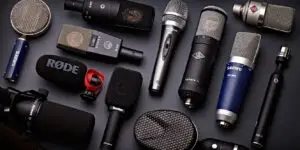Equalization (EQ) is one of the most powerful tools for improving your microphone’s sound quality. Whether you’re recording vocals, streaming, podcasting, or performing live, properly adjusting your EQ settings can make your voice clearer, more natural, and free from unwanted frequencies. In this guide, we’ll break down the essential steps to EQing your microphone for the best possible sound.
Understanding EQ Basics
EQ allows you to adjust different frequency ranges to enhance or reduce certain aspects of your audio. The human voice typically ranges from 85 Hz to 255 Hz (for men and women, respectively), but a full vocal recording can extend beyond that. Here are the key frequency bands and their impact:
- Sub-bass (Below 80 Hz): Mostly unnecessary for vocals; cutting this can remove rumble and low-end noise.
- Bass (80 Hz – 250 Hz): Adds warmth and depth; too much can make vocals sound muddy.
- Low Mids (250 Hz – 500 Hz): Can add body but may cause a boxy sound if overemphasized.
- Mids (500 Hz – 2 kHz): The core vocal presence; boosting too much can make the sound harsh.
- Upper Mids (2 kHz – 6 kHz): Adds clarity and intelligibility; too much can sound nasal or piercing.
- Highs (6 kHz – 12 kHz): Enhances airiness and detail but can introduce sibilance.
- Ultra Highs (12 kHz and above): Adds sparkle and brightness but should be used sparingly.
Step-by-Step EQ Process
1. High-Pass Filter (Low-Cut) for Clarity
Most microphones capture low-end noise that isn’t needed for vocals. Start by applying a high-pass filter (HPF) at around 80-100 Hz to remove unnecessary rumble and plosives.
2. Cut the Muddy Frequencies
If your voice sounds overly boomy or unclear, look for 250-400 Hz and apply a small cut (-3 to -6 dB). This removes muddiness and improves vocal definition.
3. Reduce Boxiness & Nasal Tones
If your voice sounds boxy or stuffy, reduce the 500 Hz – 1 kHz range slightly (-2 to -4 dB). If it sounds too nasal, cutting 1-2 kHz can help.
4. Enhance Clarity & Presence
To make your vocals stand out, gently boost around 3-5 kHz (+2 to +4 dB). This increases vocal intelligibility and makes your voice clearer.
5. Tame Harshness & Sibilance
If “S” and “T” sounds are too sharp, reduce 5-7 kHz slightly or use a de-esser to control sibilance.
6. Add Air & Brightness
For an airy, polished sound, apply a subtle boost around 10-12 kHz (+2 to +3 dB). Be cautious, as too much can introduce harshness.
Additional Tips for the Best EQ Settings
- Use subtractive EQ first: Cutting problematic frequencies before boosting ensures a cleaner sound.
- Test in context: Listen to your EQ adjustments in the full mix to ensure balance.
- Avoid excessive boosts: Small, precise adjustments often yield better results than extreme changes.
By applying these EQ techniques, you can significantly improve the quality of your microphone recordings, making your voice sound more professional, clear, and balanced.







